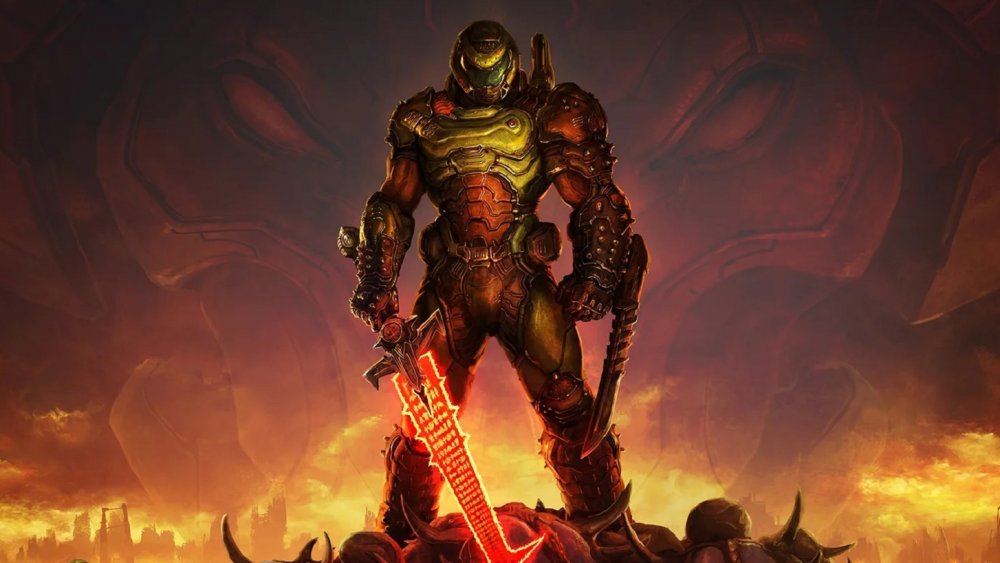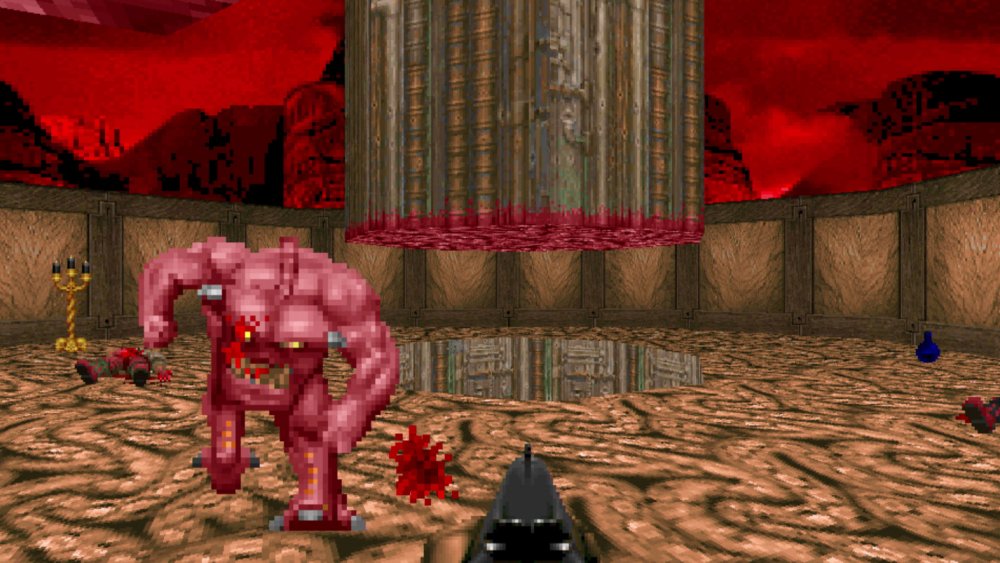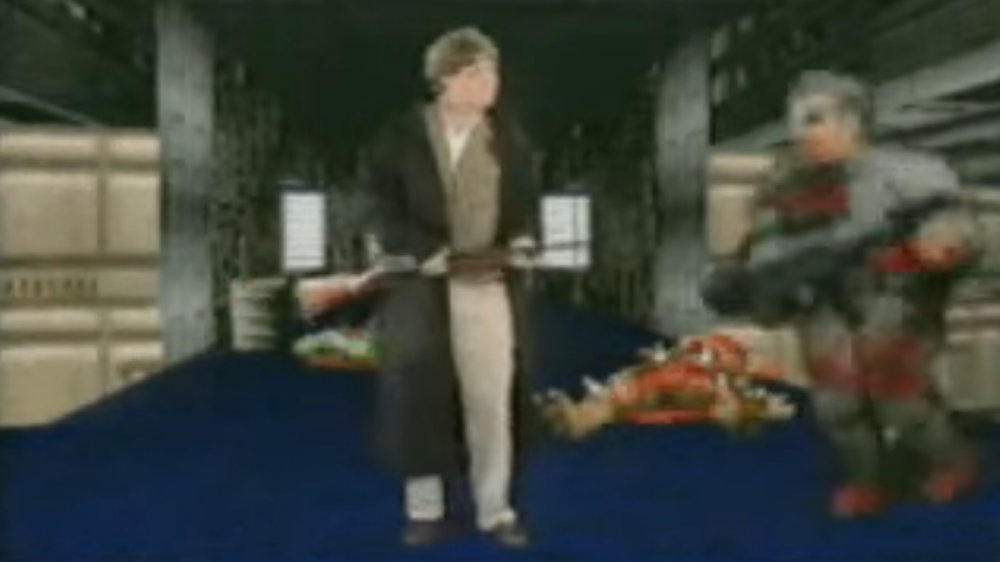The Untold Truth Of Doom
Microsoft now owns Bethesda, which means Microsoft now owns Doom — as well as every other property developed by id Software. This does not mean Doom will join hands with Halo and Gears to create the holy trinity of Xbox exclusive shooters, but the company could open a portal into a whole new dimension for the series' future. So, instead of fretting over possibilities and hypotheticals, let's examine the Doom series' past, especially the lesser known parts.
Despite being one of the most popular franchises in Bethesda's library, the series holds plenty of secrets that aren't familiar to the wider gaming public. No, that isn't a reference to the decapitated head of John Romero stashed behind the Icon of Sin. These are the kinds of secrets that made the Doom franchise possible and helped it become the household name it is today.
Here is the untold truth of Doom.
Doom was never the first 3D shooter nor 3D
Many people might point to OG Doom as the first truly 3D FPS game. You can walk up stairs, fall down ledges, and snipe pesky demons hiding in towers. Well, truth is stranger than fiction since this is all a fancy piece of sorcery. Doom never was 3D.
The key to the original Doom's illusion is a rendering technique called binary space partitioning, which is quite complex. Essentially, it splits the map of a level — which was drawn in 2D — into nodes and each node into smaller nodes. Then, depending on where the player is on the map and where they're looking, the program renders different nodes and sub-nodes into polygons of different elevations, creating a semblance of 3D. Everything the player can't see, whether it is obscured by a different node or off-screen, is completely unrendered to save on memory. Parts of the game map literally don't exist until they're in the player's field of view.
Have you ever wondered why you can shoot enemies at different elevations in Doom without changing your gun's angle? Ever pondered why rooms in the original Doom aren't stacked over other locations? Because every node is actually the same height as every other node. When you load up classic Doom, you might think you're playing a slower, earlier version of Doom Eternal, but instead you're essentially experiencing something closer to Hotline Miami.
Microsoft almost owned Doom before it owned Bethesda
It's funny how the world works. Microsoft now owns Doom, a move that has been fifteen years in the making, and it all started with Microsoft's desire to push copies of its operating system.
When PC usage initially took root, the operating system of choice was MS-DOS. Most programs — including games such as Doom — ran on MS-DOS, but Microsoft founder Bill Gates wanted to change all that. He saw that the game was popular, and hoping for a piece of the demon-flavored pie, tasked a team of programmers to port the game to Windows 95. Among the coders was none other than future Valve-founder Gabe Newell, and their porting job was a hell-raising success.
The fruits of the Windows team's labor became known as Doom95, which not only popularized the Windows 95 operating system but also started a push to develop more titles for the system. Eventually, more computers ran Doom than Windows, and this runaway success planted a kernel of inspiration in Gates' head: buy id Software. That plan eventually fell through, but now Microsoft owns the company that owns the company that owns id Software, all thanks to its purchase of Bethesda.



